This is the art blog of Charlsa Hensley/artevince-sempre. Do you like art history? Art conservation? Contemporary art? MY art? Boy, are you in the right place! Welcome.
Don't wanna be here? Send us removal request.
Photo

“To your health, civilization!” toasts Death as he drinks a goblet of blood in this cartoon commentary on the horrors of the First World War. It’s in the book Raemaekers’ Cartoons by the artist Louis Raemaekers, a Dutch painter and political cartoonist. Raemaekers left the neutral yet threatened Netherlands for the UK in 1915 to help campaign for the Allied cause.

Each cartoon of Raemaekers’ is accompanied by a passage from well-known writers at the time. While the publisher is Doubleday, it really is the work of the British War Propaganda Bureau, whom Raemaekers worked extensively with after moving to London. It was translated and distributed in many neutral countries at the time, including the United States, in order to rally for the cause of an Allied victory.

Raemaekers eventually toured the United States in 1917, helping to bring news of the atrocities of the war into the homes of Americans. The United States entered the War in April of 1917, and Raemaekers’ cartoons were a big part in bringing around public opinion in favor.

470 notes
·
View notes
Photo





Tadayoshi Nakabayashi
etchings
112 notes
·
View notes
Text
Ernst Bloch. The language is frustrating as hell, but "nonsynchronism and its obligation to the dialectics" (or something like that) sounds EXACTLY what you're talking about.
Could be Nietzsche's "disadvantages and uses for historical living" but could also easily be something else by him.
In any case, check out the bloch article. Once you get past the infuriating jargon, it is super useful. It makes a distinction between people who can't live presently and people who resist living presently.
listening to this extremely contemporary trap song and getting riled up by this extremely frustrating poverty porn article about a town near here
the music is very trendy, now, and forward-thinking; couldn’t have existed a year or three ago
the article portrays the town as backwards, ancient, trapped in the last century’s economy and social problems; as if it shouldn’t have existed, even a year or three ago
but they’re both happening in the same place at the same time, together
someone, maybe nietzhche? had this really great vision of time and progress, where any given period is torn between progressive and regressive narratives; how things lurch about violently between “going somewhere” and falling to shit
it’s so real
2 notes
·
View notes
Photo




Hey! If I have any followers in the Kent, Akron or Cleveland area in Ohio, I have a weird request…
I submitted to last year’s GAR show held at the Andrew Jackson house in Akron, and I got in! And my art got to hide out in some guy’s office there for a year! But now it needs to be taken down, and I… can’t do that. I’m in Virginia.
I really don’t want the work to be destroyed (which it will be, if no one picks it up). If anyone wants a screenprint of osteocytes and is will to drive to the Andrew Jackson house in late November, message me and I will contact the curatorial assistant saying you’re picking it up.
1 note
·
View note
Photo

AP / David von Blohn (via)
4 notes
·
View notes
Photo

Correggio c. 1526-1530
Assumption of the Virgin
19K notes
·
View notes
Photo





Abandoned Homes Are Surprisingly Full Of Life (Or Remnants Of It)
(Martino Zegwaard)
16K notes
·
View notes
Photo








Whose Values?, a collaborative project between Barbara Kruger and local high school students, asks some big questions. Here’s what our visitors have been saying.
What do you think? Justice for whom?
16K notes
·
View notes
Photo










Artist Sofia Leitão
Selected works between 2010-2013, various dimensions, various materials.
B. 1977 and lives in Portugal, Sofia Leitão has Degrees in Sculpture from the Faculty of Fine Arts of the University of Oporto (2005) and Drawing from the Superior School of Fine Arts of Oporto (2000).
Her work and exhibition projects can be found in both national institutions and private collections in Austria, Portugal, Spain, and the USA.
Sources: Cargo Collective | Caroline Pagès Gallery
27K notes
·
View notes
Photo


Lauren Kalman
Hard Ware, 2006
From her artist’s statement:
“In my work, applying and wearing gold suggests a struggle between the unrefined body and the desire for perfection. The body endures pain in an attempt to recast itself, through the wearing of the intrusive gold adornment. The bodily configurations appear absurd and require physical restraint twitching,wincing, or swallowing. The contortions caused by the grotesque adornment counter the display of gold as perfection.”
91 notes
·
View notes
Photo

Edward Steichen, Isadora Duncan in the Parthenon, Athens, 1921.
772 notes
·
View notes
Photo





On this day, 50 years ago—August 11, 1965—the Los Angeles neighborhood of Watts erupted in one of the most violent race rebellions in American history. A reaction to decades of oppression, economic disenfranchisement, and racial profiling endured by the African American community, the revolt left 34 people dead and devastated Watts, which was engulfed by fire for a week.
“We watched aghast the rioting, looting, and burning during the August happening. While the debris was still smoldering, we ventured into the rubble like other junkers of the community, digging and searching, but unlike others, obsessed without quite knowing why. By September … we had collected three tons of charred wood and fire-molded debris … We gave much thought to the oddity of our found things. Often the smell of the debris … turned our thoughts to what were and were not tragic times in Watts and to what to do with the junk we had collected, which had begun to haunt our dreams.” —Noah Purifoy

Noah Purifoy, Drum Song, 1966, Davis Collection © Noah Purifoy Foundation
In the riot’s wake, Purifoy, the founding director of the Watts Towers Arts Center, gathered a group of artists including Deborah Brewer, Judson Powell, Ruth Saturensky (currently known as Charu Colorado), and Arthur Secunda. Together, they created 66 Signs of Neon, an exhibition of works constructed from the debris Purifoy and Powell had collected. In keeping with his fascination for the street and its objects, Purifoy’s collaborative art project evoked a Neo-Dada approach to the fire-ravaged alleys of postriot Watts with a peculiarly American spirit of making use of the material at hand. Titled in reference to the crystalized lead drippings from burnt neon signs the artists used in their assemblages, 66 Signs of Neon traveled to nine venues across the country between 1966 and 1969. Installed here for the first time since the 1960s is a selection of surviving works from this landmark exhibition that, in Purifoy’s words, set him on his path as an artist.
This post is part of a series related to the exhibition, Noah Purifoy: Junk Dada, on view at LACMA through September 27. Follow #NoahPurifoy for more.
444 notes
·
View notes
Photo

Germany: A Winter’s Tale George Grosz, 1918-1920. Oil and collage on canvas.
“Partly because of its unfairly discriminatory nature, inflation brought out the worst in everybody--industrialist and worker, farmer and peasant, banker and shopkeeper, politician and civil servant, housewife, soldier, merchant, tradesman, miner, moneylender, pensioner, doctor, trade union leader, student, tourist--especially the tourist. It caused fear and insecurity among those who had already known too much of both. It fostered xenophobia. It promoted contempt for government and subversion of law and order. It corrupted even where corruption had been unknown, and too often where it should have been impossible. It was the worst possible prelude -- although detached from it by several years -- to the great depression; and thus what followed.”
-Adam Fergusson, When Money Dies: The Nightmare of Deficit Spending, Devaluation, and Hyperinflation in Weimar Germany.
“In Grosz's Germany, everything and everybody is for sale. All human transactions, except for the class solidarity of the workers, are poisoned. The world is owned by four breeds of pig: the capitalist, the officer, the priest and the hooker, whose other form is the sociable wife. He was one of the hanging judges of art.”
-Robert Hughes
#george grosz#germany a winter's tale#weimar#weimar germany#dada#neue sachllichkeit#please do not reblog without the text!!!#i am trying to make a point here
0 notes
Photo
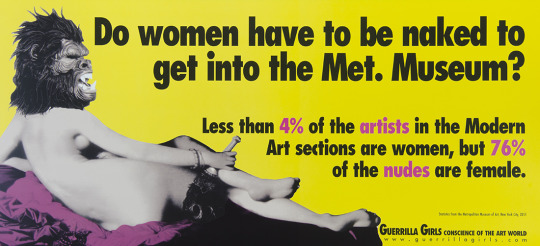
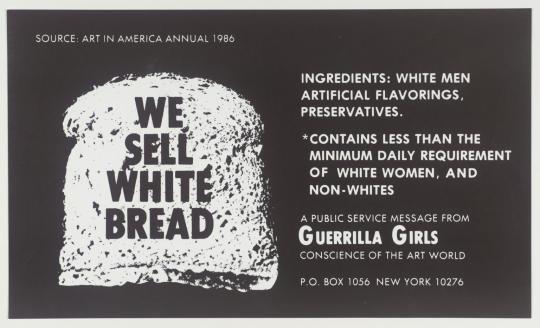
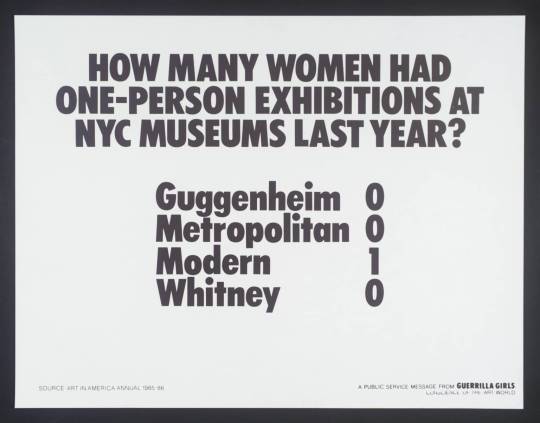
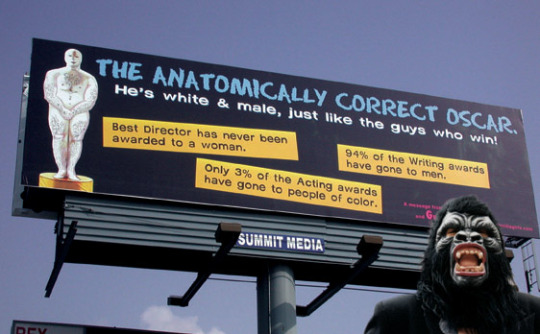

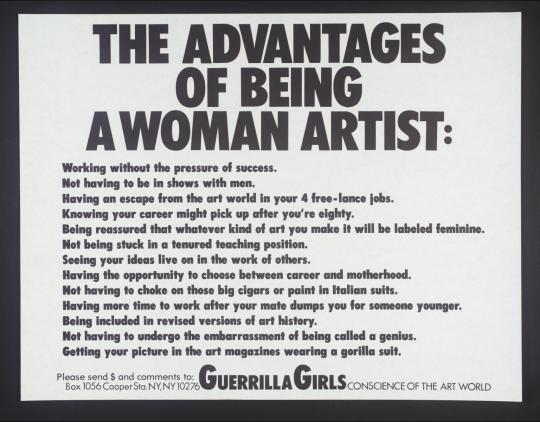
This year is the 30th anniversary of the founding of the feminist art and activist group Guerrilla Girls! Happy birthday, y’all! Keep up the good work.
40K notes
·
View notes
Photo

by ABCNT
32 notes
·
View notes
Photo

Practice, practice, practice.
0 notes
